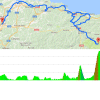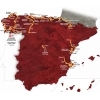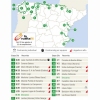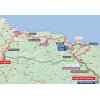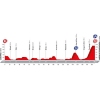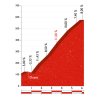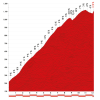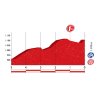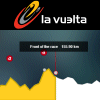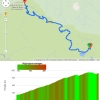All Grand Tours honour their Classics. The Giro and the Mortirolo, Zoncolan and Stelvio are inextricably linked, the same for the Tour de France and l’Alpe D’Huez, the Galibier and Mont Ventoux. And the Vuelta has its Alte de El Angliru and Lagos de Covadonga. Surrounded by the enchanting National park Picos de Europa the climb is simply overwhelming.
To get to the Lagos the riders race the rolling roads of Asturias for 140 kilometres to arrive at the foot of the first climb of the day. Alto de Fito is 7.7 kilometres at 7.3%. The ascent was featured in the Vuelta-stage to Lagos de Covadonga in 2012, when Antonio Piedra brought an early break home.
On the same roads as then the riders head to the closing climb. And a tough climb it is. The average gradient may be 7.3%, but that’s exactly what it is: an average. With 7 kilometres remaining a 800 metres sector goes up at 15% and close to the top the maximum gradient of 17.5% is reached. On the other hand, the ascent is interrupted by two drops, the last one in the last kilometre.
Lagos de Covadonga is the end of the road, there is only one side to ascent. Since the climb debuted in the Vuelta in 1983 a string of renowned riders have won here, including Marino Lejaretta, Pedro Delgado, Laurent Jalabert and Luis Herrera. Two years ago Przemysław Niemiec climbed to victory on the beautiful slopes.
At the finish wait 10, 6 and 4 seconds for the first three riders, and 3, 2 and 1 seconds can be gained at the intermediate sprint after 167 kilometres.
Live race report 10th stage 2016 Vuelta. The finish is expected around 17:40, local time.
Vuelta a España 2016 Stage 10: Route maps, height profiles, etc
Click on the images to zoom
